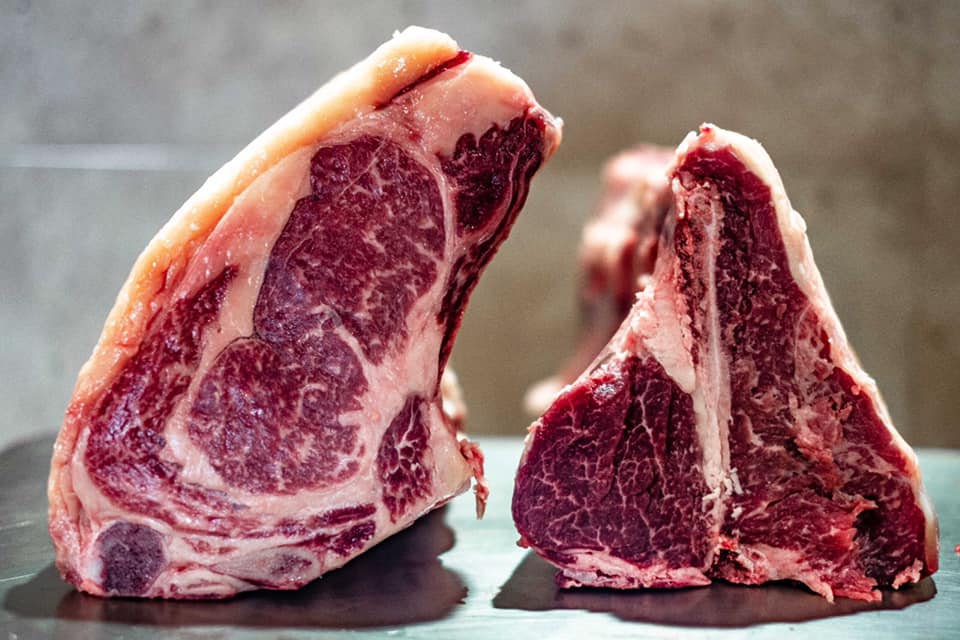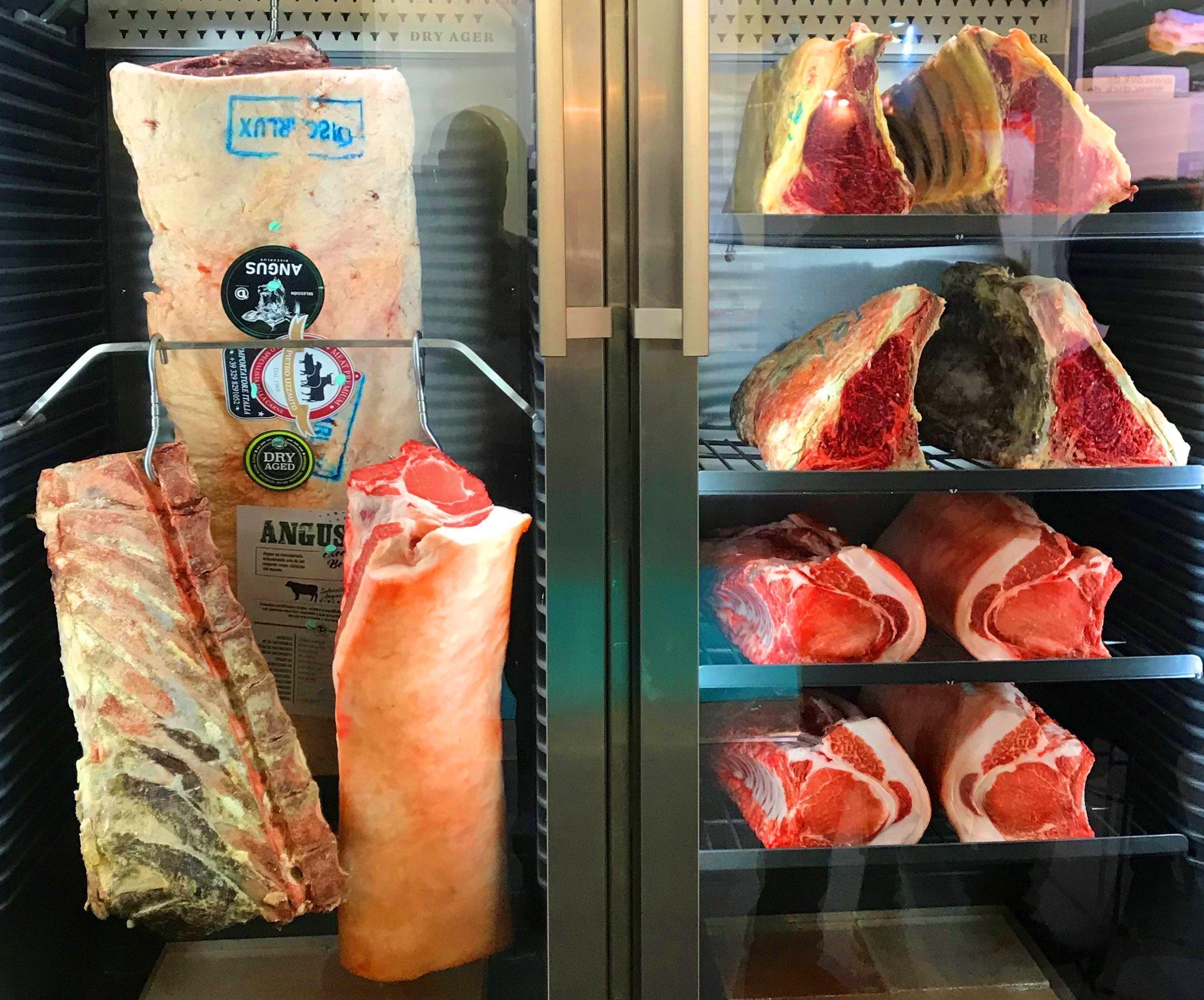Dry Aging
In this type of maturation, the meat is stored in an aerobic environment at temperature (normally close to 0 °C) and controlled humidity, such as refrigerated storage. The product can be left in direct contact with the air, resting on shelves or wrapped in gauze or hanging, so that all its sides are exposed.
Exposure to air oxygen allows aerobic bacteria, beneficial enzymes and moulds to interact with the product. These micro-organisms transform and break down the molecular bonds and muscle tissues in the meat, thus intensifying their own flavor and creating new flavors at the same time. The moisture contained in the piece in maturation, with the passage of time is extracted through evaporation, thus concentrating the flavors but also causing a certain shrinkage of the treated piece in addition to a significant decrease in weight.
The dry maturation period varies depending on the result to be obtained from 12 days to 45 days or more; the average maturation time of most of the cuts on the market is 28 days, period within which the meat appears to be much softer but not excessively tasty. In fact, the more the meat is matured, the more its flavors and smells tend to become strong, sometimes at the limits of taste for many people.
So it can be said that maturation times beyond four weeks, depend directly on the personal tastes of the users of the product.

Steaks from dry maturation are much softer and tender as enzymes break down muscle tissue. Enzymes also weaken the collagen present in the connective tissue, which will tend to dissolve more in cooking producing tender and succulent meat.
As far as flavouring is concerned, enzymes break down proteins, fats and other fat-like molecules (components that are normally quite flavorful) into lactic acids, flavorful amino acids, aromatic fatty acids and glucose. These by-products react with each other during the cooking process, creating new molecules that lead to the enrichment of the aroma.
Finally, the dry maturation also generates natural monosodium glutamate which will act as flavour enhancer of the product, avoiding having to flavor it with excessive addition of salt.
Dry maturation, however, is not free from defects, starting from the time and costs required for the treatment. It is in fact common to perform the treatment on cuts of considerable size, for example a whole loin. This large piece of meat, in addition to the cost, also needs a suitable space, be it a large refrigerator or a refrigerated cell, to allow a regular flow of air and the proper control of temperature and humidity.
At the end of the maturation treatment, after verifying that there were no undesirable effects of malevolent bacterial contamination, the edge of the treated piece must be trimmed. This part will be rather dry, dirty, at the edge of the odorant and must be removed for about 1 and a half centimeters on the entire cut.
This operation, together with the natural evaporation of the moisture contained in the piece, which occurred during maturation, causes a significant weight loss compared to the initial one. In addition, the maintenance of the fridge around 0°C for the long times required, involves considerable electricity costs that must be added to those due to weight losses and the slow rotation of the meat warehouse due to long maturation times.




